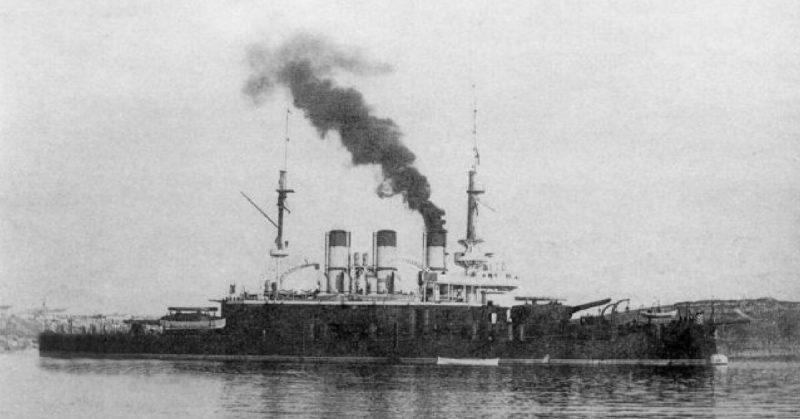In the abortive revolution of 1905, the Russian Black Sea Fleet was a powder keg of discontent. In the war with Japan, the Russian navy had suffered a terrible defeat at Tsushima, with over 10,000 dead or captured in two days. Morale plummeted across Russia. In June, one of the most famous mutinies in modern history occurred on the Battleship Potemkin.
The groundwork for the rebellion had begun months before, when many of the more experienced officers from the Black Sea Fleet had been transferred to the Pacific, for the Russo-Japanese War. The Potemkin was left manned mostly by recruits, and inexperienced officers; not the old salts who knew the ship and loved her. To make matters worse, the officers had little or no relationship with the senior enlisted of the crew. There were cracks in the vital chain of command.
On January 22, anger had boiled over among Russia’s working classes. Farmers, factory workers, and intellectuals rioted. They felt the government had been mistreating them, and strikes and riots were their only defense. Across the country, clashes with police and military escalated, and tensions grew among the Black Sea Fleet.
Tsentralka, the Central Committee of the Social Democratic Organisation of the Black Sea Fleet, was essentially a secret union of sailors within the fleet. They wanted to organize widespread mutinies to take advantage of the disturbances, but no dates had been officially set. By June, sailors were ready for revolution. Tensions came to a head on the 27th.
Food in the Black Sea Fleet had always been subpar. The sailors were often fed basic rations and were expected to work long hard hours.
The battleship Potemkin, a 378-foot ship with 18 officers and 705 enlisted men, was on target- practice maneuvers. Her crew was served Borscht, with rancid maggot infested meat. The sailors, disgusted by the food, refused to eat it. The ship’s second in command, Ippolit Giliarovsky threatened to shoot the men who refused to eat it.
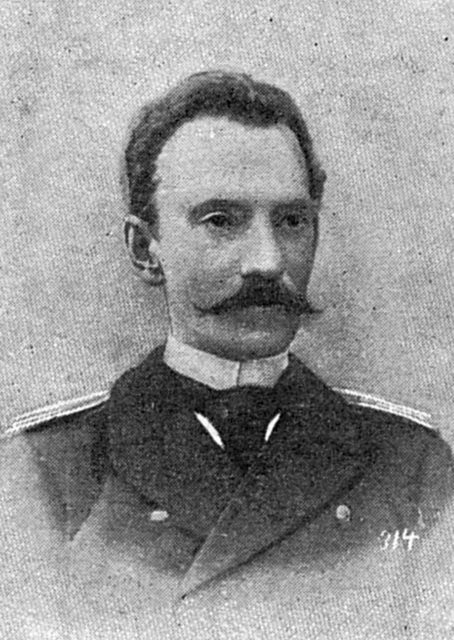
Summoning the marine guards, he cornered the most vocal troublemakers. The marines laid a tarpaulin out on the deck in front of the conspirators to protect it from the sailors’ blood. The intimidation backfired, as the mutiny’s leaders convinced their marine comrades to join them.
A riot broke out, and Grygoriy Vakulenchuk, a socialist and a member of Tsentralka, rushed to the armory, handing out rifles to 30 of the mutinous sailors. He approached the deck with an armed force, and firing began. He killed Lieutenant Neupokoyev but was aiming for Giliarovsky, who returned fire, mortally wounding Vakulenchuk.
Led by another revolutionary, Afanasi Matyushenko, the sailors pushed forward, killing Giliarovsky and the captain Evgeny Golikov.
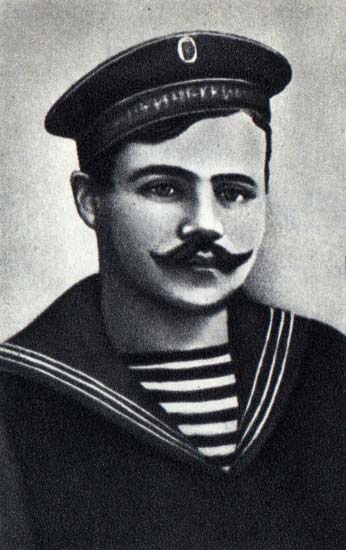
Seven of the eighteen officers on board were killed, and the rest were locked in a cabin. The sailors assumed command of the ship, led by a twenty-five man peoples’ committee.
After they had raised a red flag, which Vakulenchuk had hidden, they began firing rifles at the officers on board a nearby torpedo boat, the Ismail. The torpedo boat attempted to flee, but her mooring line became entangled in her anchor chain. Three shots from the Potemkin’s guns knocked out her funnel, and the captain immediately surrendered.
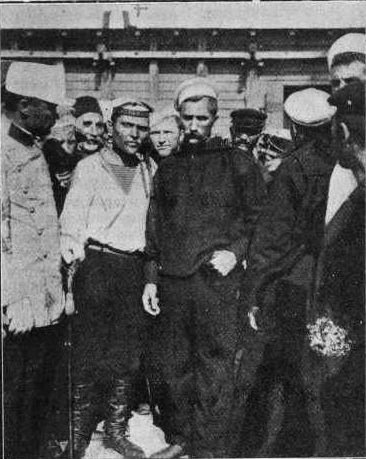
In under an hour, the revolutionaries were in control of the battleship, as well as a torpedo boat. They wished to join the revolution on shore, which was quickly spreading through the city of Odessa. They arrived there that evening, around 2200.
The city was in chaos. Riots, strikes, and protests had broken out across the industrial and dock districts. The police and cossacks were trying desperately to control the situation but were overpowered by superior numbers. The revolutionary council on the Potemkin, however, refused to put any men ashore until the rest of the Black Sea Fleet joined them. They were concerned that if they left the battleship, she would be vulnerable to counterattack by ships loyal to the Czar.

The next day, on June 28, her crew captured the military transport ship the Vekha.
On the 29th, a group of sailors went ashore with Vakulenchuk’s body. The people of Odessa, in the midst of the riots, flocked to the revolutionary’s funeral.
A mass political demonstration developed with the participants calling for revolution and destruction of the monarchy. It turned into an increasingly violent protest.
The army, which was helping the police to quell violence in the city, attacked the demonstrators. The Potemkin responded by firing two 6- inch shells at the military headquarters in the city. The shots missed, but the message struck home: the Potemkin was here to stay, and she backed the workers.
The people of Odessa responded by supporting the battleship. They sent any food they could spare to the sailors. Then word came that the Russian government had dispatched two squadrons of battleships to Odessa.
The first turned away, but the second, made up of the Rotislav and the Sinop, approached. The Potemkin responded by steaming between the two ships, whose commanders failed to give the order to fire.
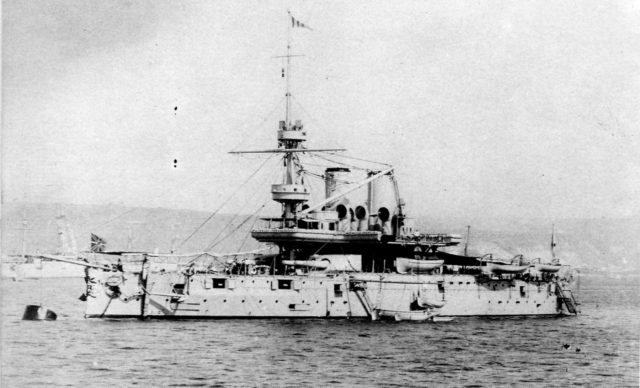
The Potemkin then headed out to meet the first squadron. One of the ships, the Dvenadsat Apostolov, attempted to ram the revolutionary battleship, but her crew, unwilling to kill fellow sailors, refused to obey orders.
The admiral in command, Aleksander Krieger, ordered his ships to withdraw but the crew of the Georgii Pobedonosets mutinied and joined the Potemkin. The two ships now sailed back to Odessa.
The next morning, July 1, the Georgii Pobedonosets’ sailors mutinied again, and loyalist members subdued the revolutionaries. They beached the ship in Odessa harbor, acting as a barricade against other ships. The Potemkin was without a port.

Over the next six days, the Potemkin searched for a port which would supply her with much-needed coal and fresh water, but she was continually denied access. Finally, the crew struck a deal with the mayor of Constanța, Romania. They agreed to be given asylum in exchange for disarming themselves, knowing they had little choice.
The ten days of the Potemkin’s mutiny were a brief, but incredibly important part of Russia’s history. It was one of the first major military rebellions in 20th century Russia and acted as a prelude to the 1917 revolutions which overthrew the Czar.
Want War History Online‘s content sent directly to your inbox? Sign up for our newsletter here!
The 1905 revolution, while successful in some areas, ultimately failed. The Potemkin’s memory was immortalized in Sergei Eisenstein’s film Battleship Potemkin.
